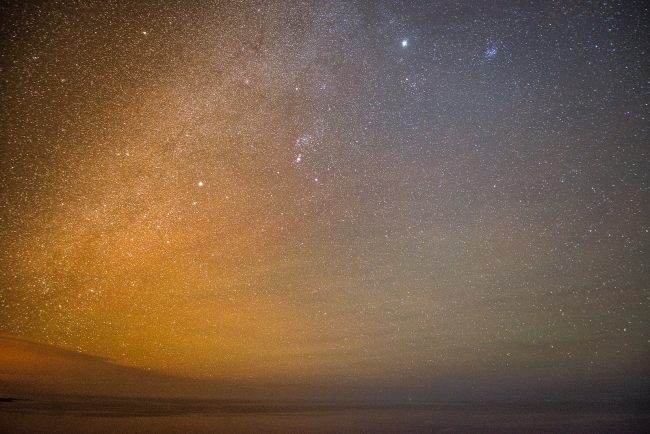According to CNN News, researchers have confirmed the existence of a rocky planet by the name of Proxima b that orbits Proxima Centauri. New data shows that the planet is the closest star to Earth’s sun, as well as the closest exoplanet to Earth in the universe. Excitement grows in hopes that Proxima b might be the next habitable planet.
Due to the planet’s location, researchers hope that further investigations will be made into the characterization of the new discovery. This analysis will be made through ongoing searches using direct imaging and high-resolution spectroscopy over the next few decades. There is also the possibility, that in the future, robotic exploration will be available on Proxima b.
The planet is 4.2 light-years away from the Earth’s solar system. This is closer than previous rocky exoplanets discovered orbiting the ultra cool red dwarf star,TRAPPIST-1, 40 light-years away.
Guillem Anglada-Escude, a lead study author, said that it is the closest terrestrial planet found and “there is no star closer to the solar system than this one.” Could Anglada-Escude be saying that Proxima b is the next habitable planet?
So Far This Is What They Know
- It is not like the planet Jupiter, which is a gas giant.
- The planet is 1.3 times the size of Earth.
- Proxima b orbits its star every 11.2 days.
- It closely orbits Proxima Centauri.
- It is within 5 percent of the distance between Earth and the sun.
- The planet is closer than Mercury and the sun.
- Proxima’s temperature is suitable for water to exist on the surface without evaporating.
- Researchers assume the atmosphere, if there is one, is between 86 to 104 degrees Fahrenheit, on its surface.
- Without an atmosphere, it could be -22 to -40 degrees.
- Proxima b does not rotate on its axis, meaning the same side always faces its star.
Researchers have also seen that part of the face of the planet is in the light, while part of it is in the dark. This could be the cause of the assumed range in temperatures.
Discoveries have found that Proxima b may have less pleasant factors, such as X-rays and ultraviolet flares. The flares are reported to be 100 times more intense than that of the sun’s rays. Research documents suggest that the ultraviolet flares can be estimated at 400 times more intense. If there is life on the planet, it could be affected by the radiation. So far, all the data is pure speculation.
What They Do Not Know
- If there is water on the planet’s surface.
- Is there an atmosphere?
- Whether or not Proxima b has a protective magnetic field, which would help with some of the radiation.
- They do not know the history of the star or how it formed.
Proxima b will continue to be researched in order to determine whether or not it is to be the next habitable planet. Researchers have more questions, and they want them answered. Unfortunately, using current technology, it would take nearly 80,000 years to make the trip to Proxima Centauri, as reported by Space.com.
As the excitement grows to find out more about Proxima b, programs like Mission Centaur are undertaking the duty to build a small telescope that will point at the small star system. The telescope will look for exoplanets around the three stars.
The Starshot Project is aimed at creating and sending an ultra-fast-light-driven Nanocraft that would reach the system in 20 years after, allowing images to be beamed home. According to CNN News, this project, in particular, is on a list of breakthrough initiatives spearheaded by Stephen Hawking and Mark Zuckerberg.
By Tracy Blake
Edited by Jeanette Smith
Sources:
CNN News: Closest potentially habitable planet to our solar system found
Space.com: Proxima b: Is There Alien Life Just ‘Down the Block,’ or Even Closer?
Scientific American: Proxima B: 5 Things You Need to Know about the New Earth-Like Planet
Image Courtesy of bmalarky’s Flickr Page – Creative Commons License






